Abstract
In order to determine the descriptive epidemiology of persistent diarrhoea in rural northern India, a cohort of 963 children aged 0-71 months was followed prospectively for 12 months through weekly household visits. The incidence of persistent diarrhoea was 6.3 per 100 child-years among those aged 0-71 months, and was highest (31 per 100 child-years) among those aged 0-11 months. There were no significant sex-related differences in the incidence of the disease, and the overall seasonal distribution of acute and persistent diarrhoea was similar. The persistence of diarrhoeal symptoms was significantly correlated with a higher initial mean stool frequency (P less than 0.01) and passage of gross blood with stools (P less than 0.001). Persistent diarrhoea was an important problem among children during the first 2 years of life. Established enteric pathogens were isolated during the initial illness in 46.4% of persistent and 55.4% of acute episodes. Pathogens isolated during persistent episodes included enterotoxigenic Escherichia coli (ETEC 9.3%), Salmonella spp. (4.7%), as well as campylobacter (4.7%), Shigella spp. (2.3%), Entamoeba histolytica (2.3%), and rotavirus (2.3%). Similar proportions of these pathogens were isolated also during episodes of acute diarrhoea. Multiple pathogens were isolated in 7% of the persistent and 5% of the acute episodes. E. coli that manifested aggregative adherence (EAEC-A) was more common (34.9% versus 12.3%) in persistent than acute episodes (P less than 0.01), and initial faecal excretion of EAEC-A was significantly associated with the persistence of a diarrhoeal episode.
Full text
PDF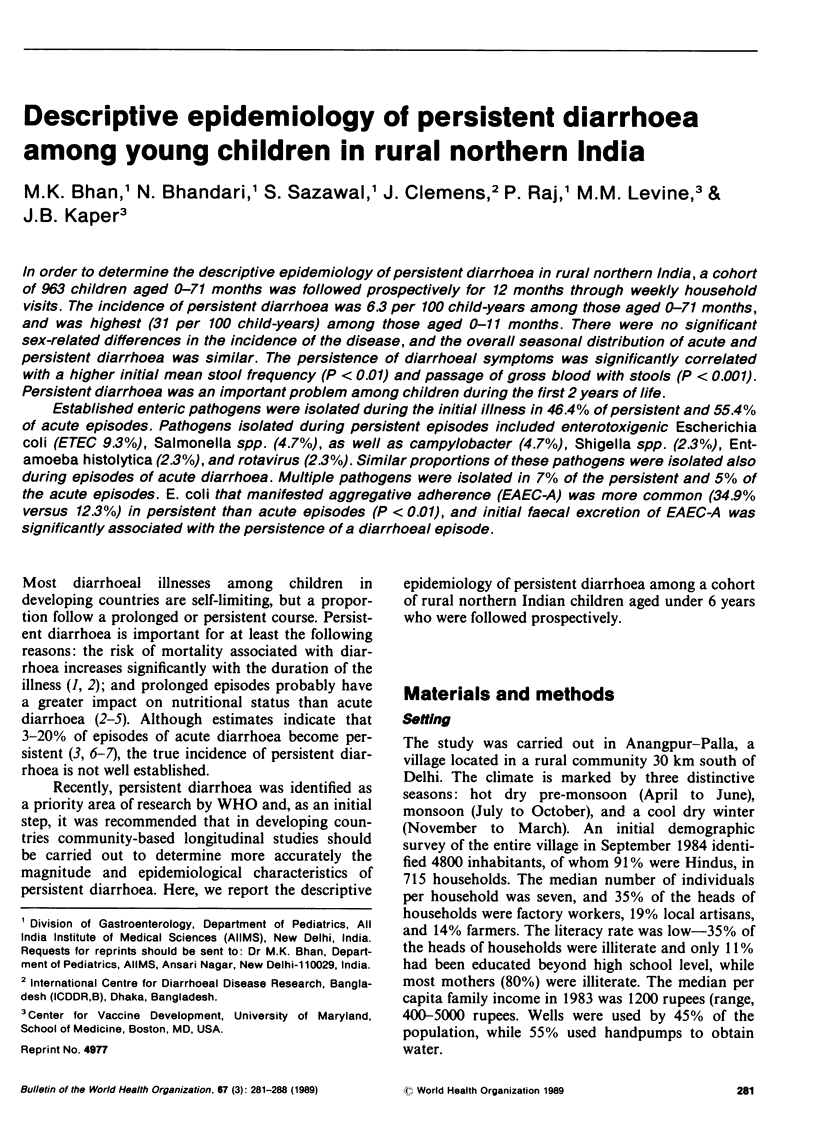
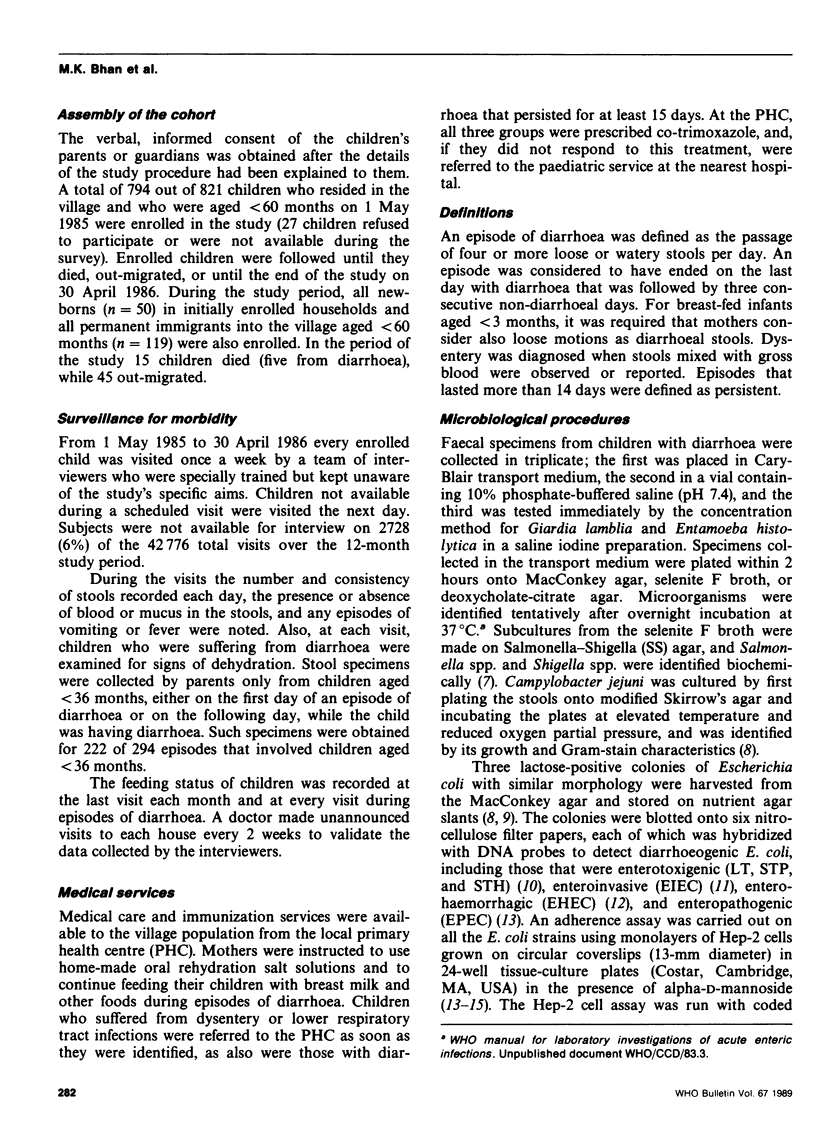
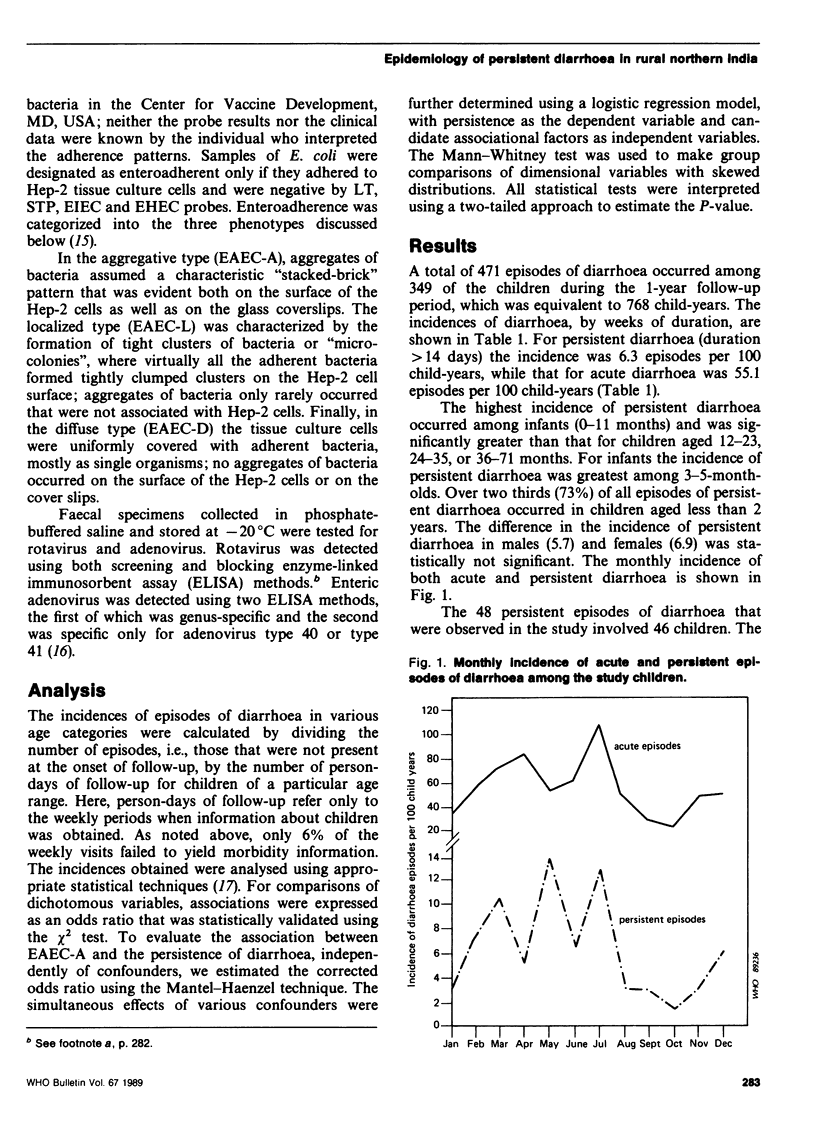
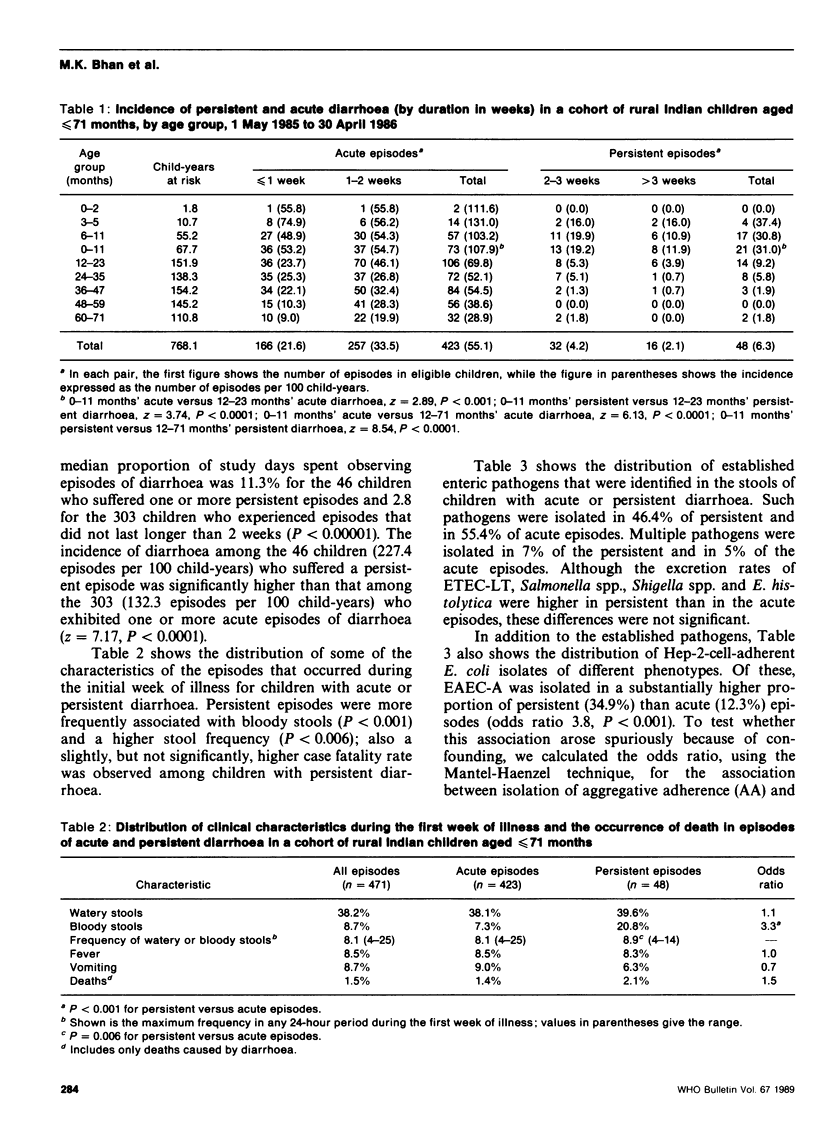
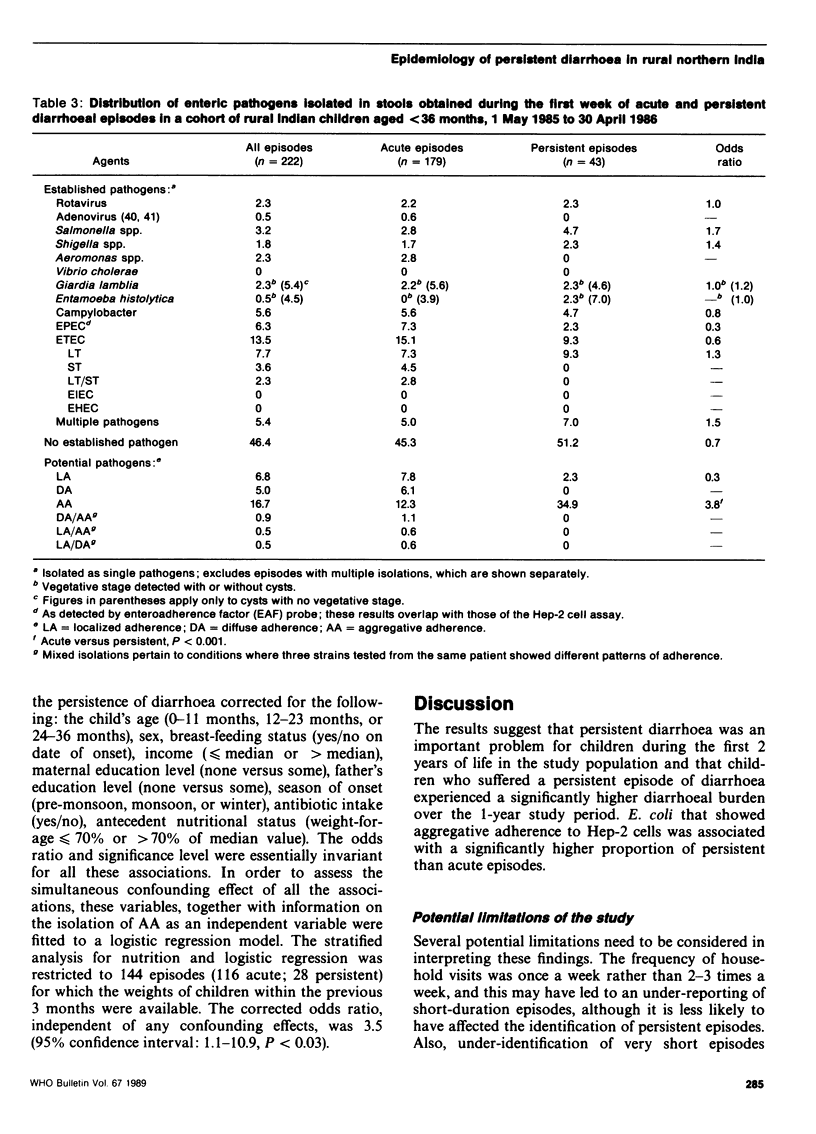
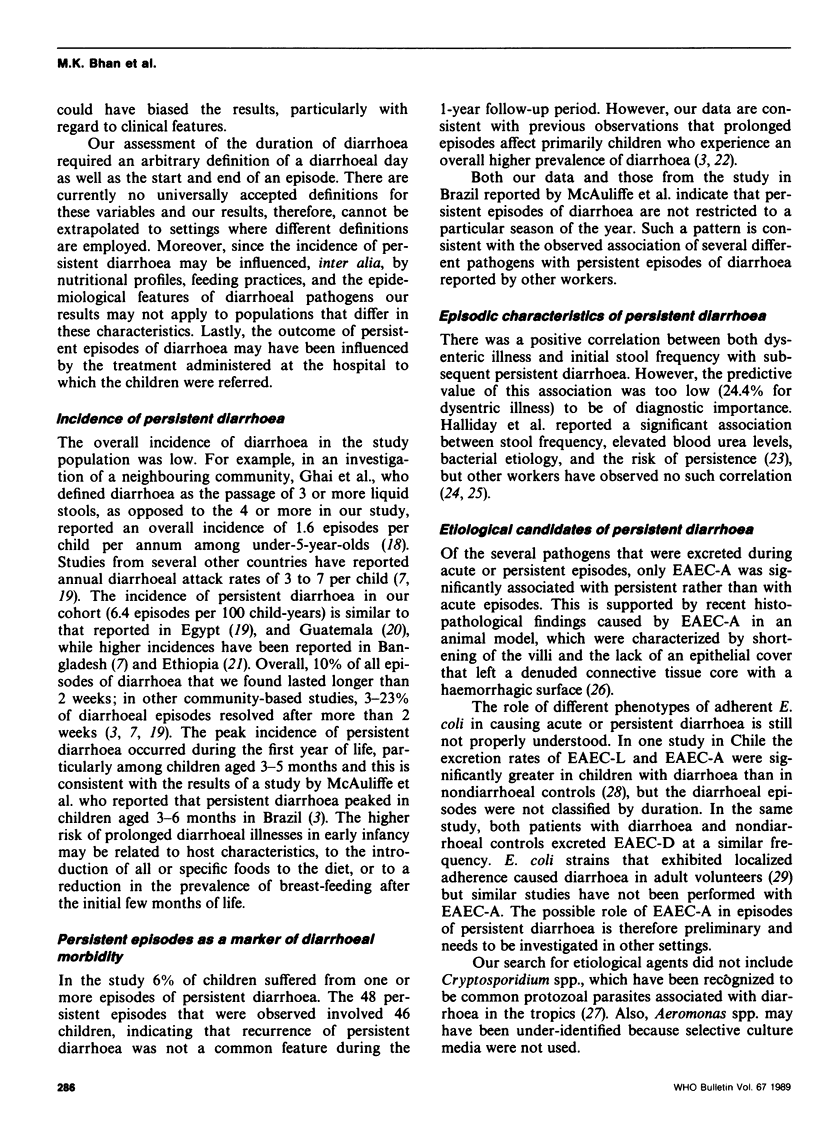
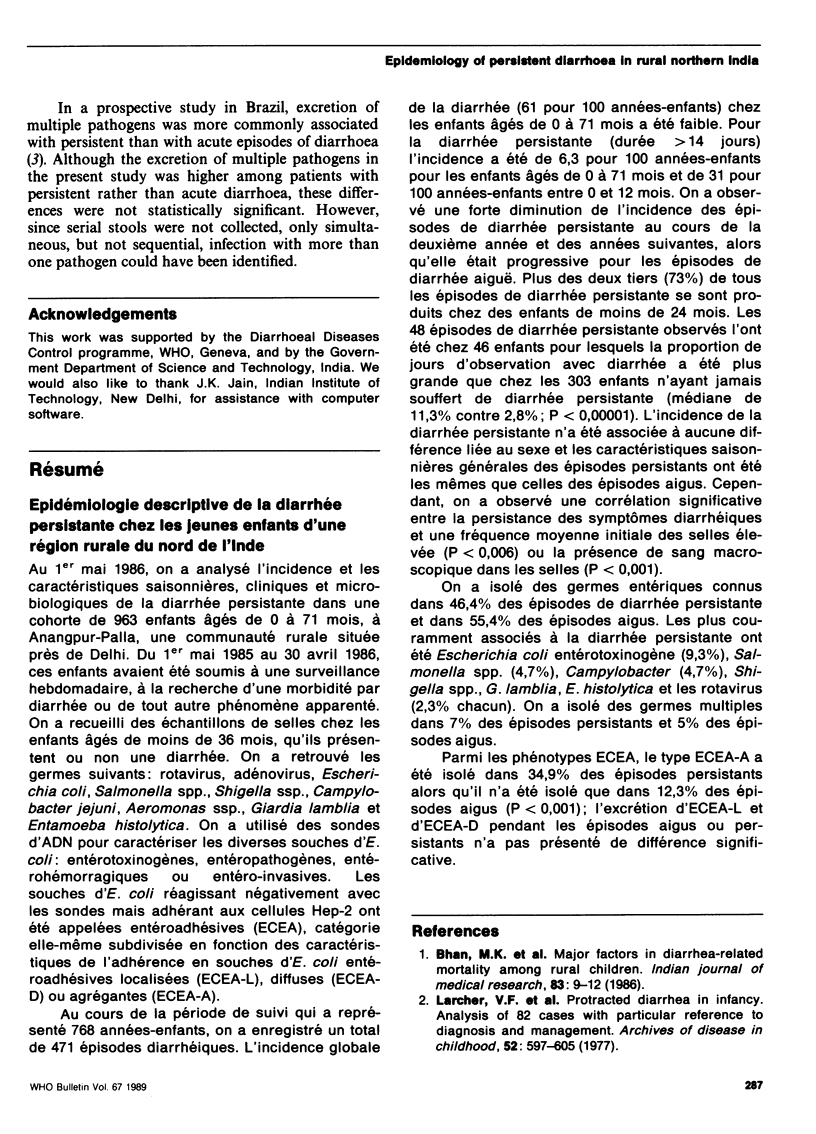
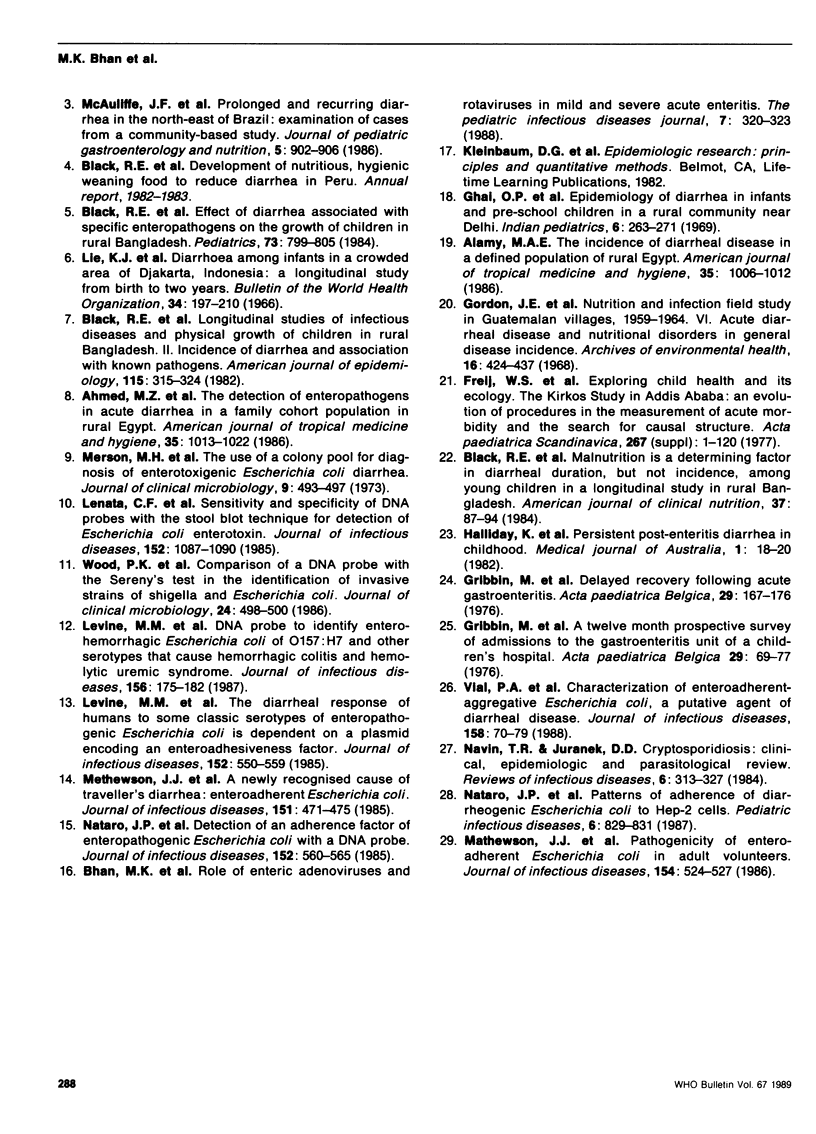
Selected References
These references are in PubMed. This may not be the complete list of references from this article.
- Bhan M. K., Raj P., Bhandari N., Svensson L., Stintzing G., Prasad A. K., Jayashree S., Srivastava R. Role of enteric adenoviruses and rotaviruses in mild and severe acute enteritis. Pediatr Infect Dis J. 1988 May;7(5):320–323. doi: 10.1097/00006454-198805000-00005. [DOI] [PubMed] [Google Scholar]
- Black R. E., Brown K. H., Becker S., Alim A. R., Huq I. Longitudinal studies of infectious diseases and physical growth of children in rural Bangladesh. II. Incidence of diarrhea and association with known pathogens. Am J Epidemiol. 1982 Mar;115(3):315–324. doi: 10.1093/oxfordjournals.aje.a113308. [DOI] [PubMed] [Google Scholar]
- Black R. E., Brown K. H., Becker S. Effects of diarrhea associated with specific enteropathogens on the growth of children in rural Bangladesh. Pediatrics. 1984 Jun;73(6):799–805. [PubMed] [Google Scholar]
- Gordon J. E., Ascoli W., Mata L. J., Guzmán M. A., Scrimshaw N. S. Nutrition and infection field study in Guatemalan villages, 1959-1964. VI. Acute diarrheal disease and nutritional disorders in general disease incidence. Arch Environ Health. 1968 Mar;16(3):424–437. doi: 10.1080/00039896.1968.10665082. [DOI] [PubMed] [Google Scholar]
- Gribbin M., Walker-Smith J., Wood C. A twelve month prospective survey of admissions to the gastroenteritis unit of a children's hospital. Acta Paediatr Belg. 1976 Apr-Jun;29(2):69–77. [PubMed] [Google Scholar]
- Halliday K., Edmeades R., Shepherd R. Persistent post-enteritis diarrhoea in childhood: a prospective analysis of clinical features, predisposing factors and sequelae. Med J Aust. 1982 Jan 9;1(1):18–20. [PubMed] [Google Scholar]
- Larcher V. F., Shepherd R., Francis D. E., Harries J. T. Protracted diarrhoea in infancy. Analysis of 82 cases with particular reference to diagnosis and management. Arch Dis Child. 1977 Aug;52(8):597–605. doi: 10.1136/adc.52.8.597. [DOI] [PMC free article] [PubMed] [Google Scholar]
- Levine M. M., Nataro J. P., Karch H., Baldini M. M., Kaper J. B., Black R. E., Clements M. L., O'Brien A. D. The diarrheal response of humans to some classic serotypes of enteropathogenic Escherichia coli is dependent on a plasmid encoding an enteroadhesiveness factor. J Infect Dis. 1985 Sep;152(3):550–559. doi: 10.1093/infdis/152.3.550. [DOI] [PubMed] [Google Scholar]
- Levine M. M., Xu J. G., Kaper J. B., Lior H., Prado V., Tall B., Nataro J., Karch H., Wachsmuth K. A DNA probe to identify enterohemorrhagic Escherichia coli of O157:H7 and other serotypes that cause hemorrhagic colitis and hemolytic uremic syndrome. J Infect Dis. 1987 Jul;156(1):175–182. doi: 10.1093/infdis/156.1.175. [DOI] [PubMed] [Google Scholar]
- Mathewson J. J., Johnson P. C., DuPont H. L., Morgan D. R., Thornton S. A., Wood L. V., Ericsson C. D. A newly recognized cause of travelers' diarrhea: enteroadherent Escherichia coli. J Infect Dis. 1985 Mar;151(3):471–475. doi: 10.1093/infdis/151.3.471. [DOI] [PubMed] [Google Scholar]
- Mathewson J. J., Johnson P. C., DuPont H. L., Satterwhite T. K., Winsor D. K. Pathogenicity of enteroadherent Escherichia coli in adult volunteers. J Infect Dis. 1986 Sep;154(3):524–527. doi: 10.1093/infdis/154.3.524. [DOI] [PubMed] [Google Scholar]
- McAuliffe J. F., Shields D. S., Auxiliadora de Sousa M., Sakell J., Schorling J., Guerrant R. L. Prolonged and recurring diarrhea in the northeast of Brazil: examination of cases from a community-based study. J Pediatr Gastroenterol Nutr. 1986 Nov-Dec;5(6):902–906. doi: 10.1097/00005176-198611000-00014. [DOI] [PubMed] [Google Scholar]
- Merson M. H., Sack R. B., Kibriya A. K., Al-Mahmood A., Adamed Q. S., Huq I. Use of colony pools for diagnosis of enterotoxigenic Escherichia coli diarrhea. J Clin Microbiol. 1979 Apr;9(4):493–497. doi: 10.1128/jcm.9.4.493-497.1979. [DOI] [PMC free article] [PubMed] [Google Scholar]
- Nataro J. P., Baldini M. M., Kaper J. B., Black R. E., Bravo N., Levine M. M. Detection of an adherence factor of enteropathogenic Escherichia coli with a DNA probe. J Infect Dis. 1985 Sep;152(3):560–565. doi: 10.1093/infdis/152.3.560. [DOI] [PubMed] [Google Scholar]
- Navin T. R., Juranek D. D. Cryptosporidiosis: clinical, epidemiologic, and parasitologic review. Rev Infect Dis. 1984 May-Jun;6(3):313–327. doi: 10.1093/clinids/6.3.313. [DOI] [PubMed] [Google Scholar]
- Vial P. A., Robins-Browne R., Lior H., Prado V., Kaper J. B., Nataro J. P., Maneval D., Elsayed A., Levine M. M. Characterization of enteroadherent-aggregative Escherichia coli, a putative agent of diarrheal disease. J Infect Dis. 1988 Jul;158(1):70–79. doi: 10.1093/infdis/158.1.70. [DOI] [PubMed] [Google Scholar]
- el Alamy M. A., Thacker S. B., Arafat R. R., Wright C. E., Zaki A. M. The incidence of diarrheal disease in a defined population of rural Egypt. Am J Trop Med Hyg. 1986 Sep;35(5):1006–1012. doi: 10.4269/ajtmh.1986.35.1006. [DOI] [PubMed] [Google Scholar]


